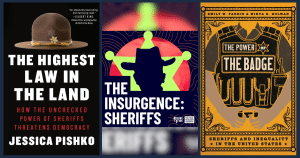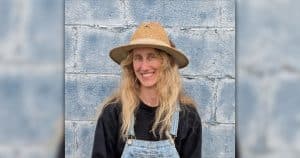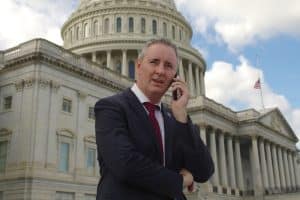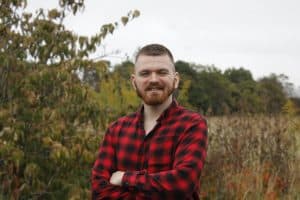Race Matters Spotlight features individuals in our community who wish to voice their opinions and perspectives regarding racial equity. By modeling how to discuss race in our society, our hope is that it will prompt us all to be more mindful and willing to have the necessary conversations regarding racism within our circles and peer groups, and normalize making those potentially awkward conversations more commonplace.
Liz K. Sheehan is a second-term school board member in the New Hope-Solebury School District where she is a founding co-chair of the Equity Committee, established in 2020. She is a parent of two students, an active participant in local politics, and an independent art curator with 20 years of experience developing exhibitions of modern and contemporary art.
When and under what circumstances did you first become aware of the concept of race?
I remember my mom telling me once when I was little that she wasn’t allowed to go to the birthday parties of her Black classmates and that she knew, as a kid, that that was wrong. I’m pretty sure we had a general/age-appropriate conversation about race at that point. I don’t remember specifics but the discussion about exclusion stuck with me.
When did you first become aware of Anti-Racism, and what does that term mean to you?
I’m not certain; probably around the beginnings of Black Lives Matter. There were so many conversations happening online, and I was a newly obsessed Twitter user, so I followed a lot of activists like DeRay Mckesson. To me, Anti-Racism means to be constantly working against structural and institutional racism by educating ourselves, speaking up, and making space.
What examples of racism (overt or unintentional) have you witnessed here in Bucks County?
Repeatedly, I have heard white residents claim that there is no racism in our area. To me, this is willful blindness – it means not only have you never listened to anyone of color speak about their experience, but you have also never asked yourself why there is such a lack of racial diversity here. Who is absent, and why? Specifically, public discussions around Critical Race Theory and the establishment of a vacation day for Diwali in our district shined a light on the biases in our community.
What’s one thing we can do to help further the cause of racial equity locally?
Education. Support teachers and school administrators who understand the need for equity as a foundation of district operations. Make sure all students are both reflected and supported in the classroom. Raise kids to know history and civics and to think critically and collaboratively about dealing with the legacy of racism in our country. Seek out and make space for diverse perspectives among our elected officials, on committees, and in our neighborhoods. That means finding and supporting candidates, teachers, and other role models; connecting with families; creating programming with and for cultures and backgrounds that may be different from ours. It means listening, hearing, educating ourselves and others about hidden biases, and often, getting out of the way.
What resources (books, movies, podcasts, etc.) on race and race relations have you found helpful in advancing your understanding on the topic?
As an academic and an introvert, culture has been my greatest educator! Here’s a partial list:
Fiction: Toni Morrison, Maya Angelou, Chimamanda Ngozi Adichie, Sarah Broom, Toni Cade Bambara, Jamaica Kincaid, Colson Whitehead, Jesmyn Ward, Jhumpa Lahiri.
Non-fiction: Nikole Hannah-Jones/1619 Project, Ibram X Kendi, Teju Cole, Ta-Nehisi Coates, Ijeoma Oluo.
As an art historian, I have learned a great deal from visual artists: Jacob Lawrence, Horace Pippin, Adrian Piper, Glenn Ligon, Lyle Ashton Harris, Kara Walker, Carrie Mae Weems, Renee Cox, Kehinde Wiley, Kerry James Marshall, Amy Sherald, Faith Ringgold, Alison and Betye Saar, William Pope.L, Titus Kaphar. Shout out to three younger artists from whom I recently learned a lot about immigration and identity: María Veronica San Martín, Idalia Vasquez-Achury, and Cheryl Mukherji. Check them out!
I follow a lot of educators and activists on social media: Black Girl in Maine (Shay Stuart-Bouley), Anti-Racism Daily (Nicole Cardoza), Frederick Joseph, DeRay Mckesson, Learning for Justice (formerly Teaching Tolerance, an invaluable project of the SPLC), Dwayne Wade, Tricia Ebarvia and #disrupttexts, We Need Diverse Books, Anti-Racist Education, Astead Herndon on the podcast The RunUp.
Finally, our local sources are equally important: the members of our Equity Committee at NHSD, the Bucks NAACP, the BCARC discussions on Facebook, Immigrant Rights Action, the Peace Center, the PA School Board Association’s equity seminars, and above all, our students who bravely share their experiences so that we can strive to meet them where they are, support them, and prepare them to be good and just humans.
Other Race Matters Spotlight Q&A’s:
Race Matters Spotlight: Reverend Michael Ruk
Race Matters Spotlight: Bursting the ‘Pennridge Bubble’
Race Matters Spotlight: Larissa (Lolly) Hopwood






